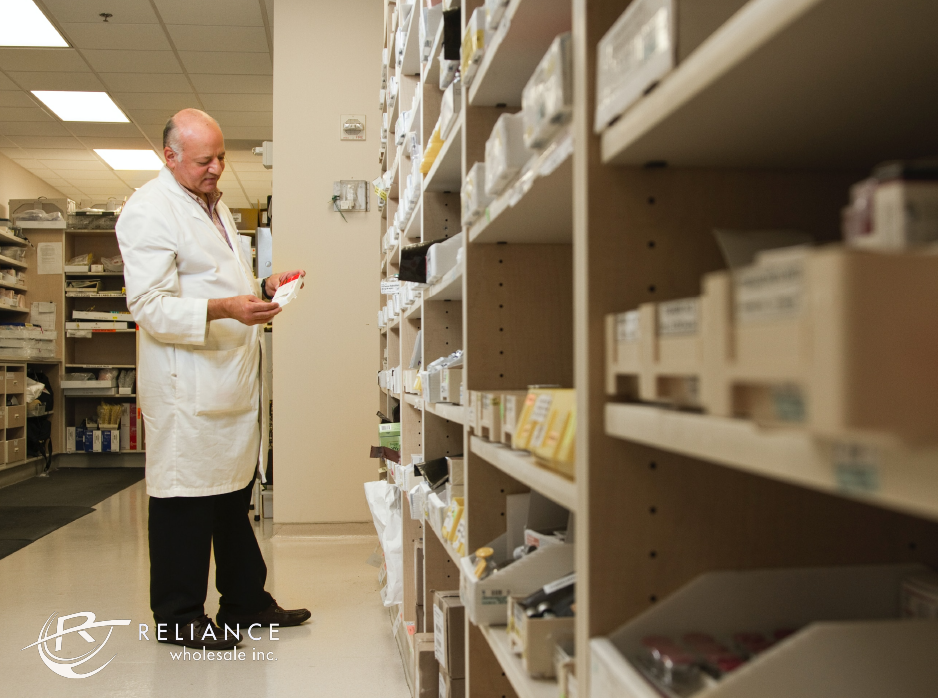
Chances are you’ve heard the buzzword, “Six Sigma,” but haven’t ventured deeper into what it means, and how it can support efficiencies in wholesale pharmaceutical distribution. Six Sigma is a data-driven methodology used to improve processes and eliminate defects or errors in various industries, including wholesale pharmaceutical distribution. While the principles of Six Sigma remain consistent across different fields, their application may vary based on the specific challenges and requirements of each industry. In wholesale pharmaceutical distribution, the Six Sigma principles are adapted to ensure the efficient and accurate delivery of pharmaceutical products while maintaining quality and compliance.
The Six Sigma principles in wholesale pharmaceutical distribution include:
Define:
Clearly identify and define the goals and objectives of the wholesale pharmaceutical distribution process. This involves understanding customer requirements, regulatory standards, and internal performance metrics. Defining the critical-to-quality (CTQ) parameters is crucial in this phase.
Measure:
Accurately measure the current performance of the wholesale pharmaceutical distribution process. This involves collecting data on key process metrics, such as order accuracy, inventory levels, lead times, and delivery times. The data should be analyzed to identify areas of improvement and potential sources of defects.
Analyze:
In this phase, the data collected is analyzed to identify the root causes of defects or errors in the distribution process. Various tools and techniques, such as root cause analysis, process mapping, and Pareto analysis can be used to identify the most significant factors affecting distribution performance.
Improve:
Based on the analysis, improvements are implemented to address the identified root causes. Solutions may include process changes, automation, training, or technology upgrades. The goal is to optimize the distribution process and minimize defects.
Control:
Once the improvements are implemented, the process needs to be monitored and controlled to sustain the gains. Key performance indicators (KPIs) are tracked to ensure that the process remains within the desired performance levels. Additionally, control mechanisms are put in place to detect and correct deviations promptly.
Standardize:
To ensure consistency and repeatability of the improved distribution process, standard operating procedures (SOPs) are established and documented. These SOPs become the basis for training employees and onboarding new staff members.
These principles are clear in their end goals, but what questions should you ask yourself when using Six Sigma principles to analyze and improve your wholesale pharmaceutical distribution policies and practices? Some examples of targeted questions to ask are:
- What are the critical-to-quality (CTQ) parameters for pharmaceutical distribution in our organization? This question helps to identify the key factors that significantly impact customer satisfaction and regulatory compliance.
- How can we measure the accuracy of our order fulfillment process? By understanding how to measure accuracy, you can determine the current performance and identify opportunities for improvement.

- What are the most common sources of errors in our distribution process? Identifying the root causes of errors is essential for implementing effective solutions and preventing future mistakes.
- What is the lead time from receiving an order to delivering it to the customer? Understanding lead times can help in setting customer expectations and improving delivery efficiency.
- Are there any specific regions or product lines with a higher incidence of distribution errors or delays? Identifying problem areas allows for targeted improvement efforts to address specific challenges.
- How can we optimize inventory levels to balance stock availability and carrying costs effectively? Balancing inventory levels ensures timely delivery without excessive carrying costs.
- What can be done to improve supplier performance and reliability? Ensuring strong supplier relationships can enhance the overall efficiency of the distribution process.
- Which processes in the distribution chain can be streamlined to reduce cycle times? Streamlining processes can help improve overall efficiency and reduce delivery times.
- What quality control measures can be implemented to safeguard pharmaceutical products during distribution? Ensuring product quality and integrity is crucial to meet regulatory standards and customer expectations.

- How can we ensure compliance with industry regulations and maintain accurate record-keeping throughout the distribution process? Maintaining compliance is vital to avoid penalties and maintain the integrity of the supply chain.
- What technologies can be adopted to enhance traceability and visibility throughout the distribution process? Utilizing advanced technologies can improve real-time tracking and reduce the risk of lost or misplaced shipments.
- Are there any recurring issues that lead to rework or delays in our distribution process? Identifying recurring issues helps in implementing permanent solutions to prevent further disruptions.
- How can we optimize delivery routes to reduce transportation costs and improve delivery speed? Optimizing routes can lead to cost savings and better delivery performance.
- What customer feedback and complaints can provide insights into potential areas for improvement? Analyzing customer feedback can shed light on specific pain points and areas that require attention.
These questions serve as a starting point for using Six Sigma principles to assess and improve wholesale pharmaceutical distribution processes. Each question should be followed up with data collection, analysis, and actionable solutions to drive continuous improvement.
Once you’ve implemented these principles and practices, some ways you will see processes are improved are:
- Reducing Order Errors: By implementing Six Sigma methodologies, wholesale pharmaceutical distributors can identify the root causes of order errors, such as incorrect product selection or shipping mistakes. Process improvements can be made to ensure accurate order processing, reducing the likelihood of medication errors and associated risks to patient safety.
- Minimizing Inventory Waste: Six Sigma can be used to optimize inventory management by analyzing demand patterns and lead times. By right-sizing inventory levels and implementing just-in-time practices, pharmaceutical distribution companies can minimize carrying costs while ensuring sufficient stock availability.
- Streamlining Distribution Process: Six Sigma helps identify bottlenecks and inefficiencies in the distribution process. Through process mapping and analysis, wholesale pharmaceutical distributors can streamline workflows, reduce redundancies, and improve overall cycle times, leading to faster and more reliable deliveries.
- Enhancing Supplier Performance: Wholesale pharmaceutical distribution heavily relies on suppliers for the timely and reliable provision of products. Applying Six Sigma principles to evaluate supplier performance can help identify high-performing vendors and establish effective supplier relationships, ensuring a consistent supply chain.
- Improving Product Quality: In wholesale pharmaceutical distribution, ensuring the integrity and quality of products is of utmost importance. Six Sigma can be utilized to identify quality issues and implement measures to prevent damage, contamination, or tampering during transit, storage, and handling.
- Compliance with Regulations: Wholesale pharmaceutical distribution is subject to strict regulatory requirements. Six Sigma principles can be employed to create standardized processes that comply with industry regulations, reducing the risk of compliance-related issues.
- Optimizing Delivery Routes: For distributors involved in multi-location deliveries, Six Sigma can be used to optimize delivery routes and schedules. By minimizing travel time and distance, fuel costs can be reduced, and delivery efficiency can be improved.
- Reducing Costs: Six Sigma’s focus on eliminating waste and optimizing processes can lead to cost savings in wholesale pharmaceutical distribution. This can be achieved by reducing the need for rework, lowering inventory carrying costs, and minimizing transportation expenses.
- Enhancing Customer Satisfaction: Accurate and timely deliveries, along with consistent product quality, contribute to higher customer satisfaction. By utilizing Six Sigma methodologies, wholesale pharmaceutical distribution companies can better meet customer expectations and build strong customer relationships.
By following these Six Sigma principles, wholesale pharmaceutical distribution companies can reduce errors, minimize waste, and enhance customer satisfaction. The implementation of Six Sigma will lead to increased efficiency, cost savings, and improved overall quality of wholesale pharmaceutical distribution operations.


